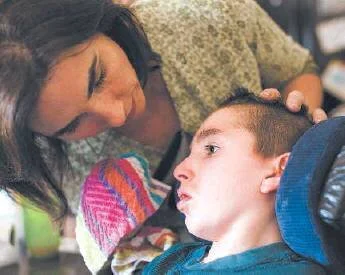Pediatric Brain Injury Studied - Research Suggests Kids Are ‘In There’
By Melissa Fletcher Stoeltje, Staff Writer - San Antonio Express News
After Liz Tullis’ 17-month-old son Conrad suffered a severe brain injury when he nearly drowned in a swimming pool in 2004, doctors advised her to withdraw care or perhaps institutionalize her child.
After Liz Tullis’ 17-month-old son Conrad suffered a severe brain injury when he nearly drowned in a swimming pool in 2004, doctors advised her to withdraw care or perhaps institutionalize her child.
There’s little hope for recovery, they told her, and Conrad’s injury was so devastating that no vestige of the boy he was remained.
But Tullis didn’t heed their words. Instead of shunting Conrad away, she sought tirelessly to enrich his life with a plethora of activities — swimming, art, physical and occupational therapies. She surrounded him with loved ones and friends, who interacted with him. She enrolled Conrad in school, where he is mainstreamed with children his age, even though he can neither move purposefully nor speak.
All the while, Tullis had a sense her son was somehow “in there” — conscious but unable to make his presence known to the outside world. So she began a one-woman crusade to improve the science around what happens to children’s brains when they are deprived of oxygen in near-fatal drownings.
In 2010, she found a willing partner in Dr. Peter T. Fox, director of the Research Imaging Institute at UT Health San Antonio. At the time, Fox was conducting brain-scanning research on children with autism. With Tullis’ help, Fox began studying the brains of children with oxygen-deprived, or anoxic, injury.
“Conrad Smiles has never been just about Conrad. It’s so no other mother will have to be told to withdraw care or institutionalize her child.”

